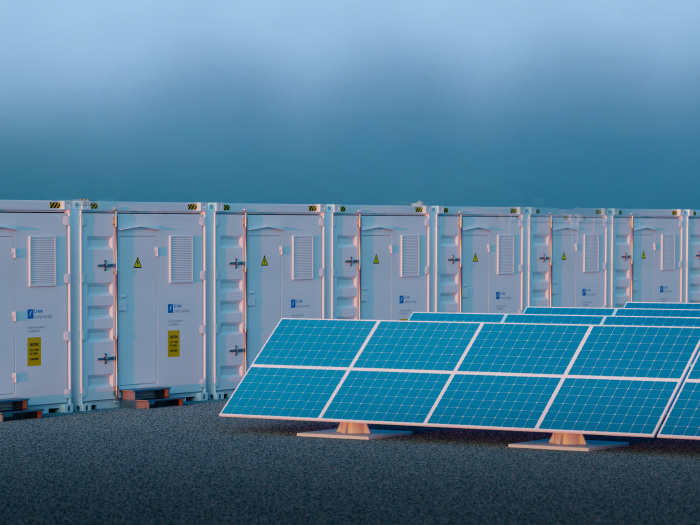News
better business decisions
Posted 2 years ago | 6 minute read

The cryptocurrency conundrum: the renewables convergence
In our recent article – The cryptocurrency conundrum: The energy impacts, we examined the energy system requirements of bitcoin and other cryptocurrency mining. However, the reality is far more complex than these simple electricity consumption comparisons would suggest. It is also a matter of potential. In this article, we look at the potential benefits that the mining sector could bring.
Getting to a net-zero energy sector requires the power system of the future to have low-carbon energy produced at scale – not only by big utilities, but also by end users’ own renewable sources. But while there has been much change in the sources fuelling electricity generation, with much more in the future, the system itself is still adapting to this transformation.
One of the key aspects of the power grid is that it must supply exactly the amount of power demanded at any given time. When the national grid was first established, it was designed with coal and big spinning turbines in mind. As a result, the mechanisms keeping the entire system stable relied on the same technology.
But increasing integration of increasing levels of volatile renewables is impacting both the stability of the grid and how balancing services are provided. Today, there are three main solutions:
- Peaker Plants: grid operators can turn on natural gas “peaker plants” for peak hours.
- Demand Response: grid operators pay end users to shut down assets during peak periods, decreasing the total amount of energy needed on the grid.
- Storage: As the cost of batteries continues to fall, utilities are increasingly looking at grid-connected storage.
Bitcoin mining offers a fourth option. Cryptocurrency miners are unique energy buyers in that they offer highly flexible and easily interruptible loads.
The new peaker?
Energy costs can account for over 80% of Bitcoin mines’ operational expenses, so they are often more sensitive to electricity prices than other industrial customers. If the price of electricity suddenly spikes during the afternoon peak, for example, this can incentivise Bitcoin mines to shut off operations temporarily. If grid operators have highly predictable, reliable, scalable loads, they can use these assets in a similar way to peaker plants to manage peak demand.
One notable benefit of miners is that they operate around the clock, they can be used at any time of day to decrease load, for example during a sudden cold snap or evening peak. Crypto currency miners have a constant energy requirement. A miner will, once turned on, not be switched off until it either breaks down or becomes unprofitable. As long as the price/kWh paid by the utility to Bitcoin miners for demand response is above their expected value for Bitcoin/kWh mined, then it always makes sense to shut down miners. Miners can also ramp up and down at an extremely granular rate. If only 25% of a miner’s demand needs to be curtailed for one hour, then a farm can shut down exactly 25% of its machines for exactly one hour.
Many cryptocurrency miners are starting to recognize this opportunity. Layer 1 is taking a full stack approach and building their own custom chips, cooling hardware, and enrolling directly in demand response programs on the Texas grid (ERCOT). Satoshi Energy is building a financial platform to turn existing energy asset owners into “behind the meter” miners. Rosseau and Crusoe are going after the flared natural gas market (with the potential to expand to other stranded energy assets). A press release from Lancium and MP2 (a Shell company) states that theirs is the first load-only controllable load resource to register with ERCOT.
Price setting
In a recent study, Ark Invest modelled how cryptocurrency mining could encourage investment in solar systems and batteries. It concluded that integrated bitcoin mining could “transfigure intermittent power resources into baseload-capable generation stations” and suggested utility-scale storage developers could augment their current battery offerings with bitcoin miners as a mechanism to increase the overall market for renewable and intermittent power sources.
The investment case behind this is that miners could be used to increase demand during renewable curtailment events in a way that is not feasible with current demand response resources. As more renewables are connected to the grid, there is an increasing risk of negative electricity prices.
By ramping up demand cryptocurrency miners could become the buyer of last resort – essentially setting the price floor for electricity, making it easier for both grid and utilities operators to plan investments, which ultimately increases market efficiency.
Benefits beyond Bitcoin
Beyond demand management, the technology behind Bitcoin and other cryptocurrencies – blockchain – also has significant potential to transform our energy system. How? Think of the historical grid model, which distributed energy from one centralised source in one-way power flows to utilities and customers.

Today’s grid incorporates two-way power flows, with growing distributed generation and storage. But challenging the traditional model are microgrids where consumers with their own energy generation or flexible demand can sell to peers at a better outcome compared to supply tariffs and grid buy-back rates.
Utilities in today’s system use complex software platforms to manage the demand, supply, and reliable delivery of electricity on the power grid. It is difficult to scale these systems to interoperate transactions between thousands of homes, and businesses let alone the millions of connected assets on those sites. This is where blockchain comes in – providing a mechanism by which every participant in a network can transact directly with every other network participant without a third-party intermediary to validate and secure transactions.
This has the potential to bring about a radical change in the industry. By directly linking producers with consumers we could see a simplification of today’s multi-tiered system, where generators, transmission system operators, distribution system operators and suppliers transact on various levels.
Value from energy markets
Cryptocurrency miners have significant potential beyond just mining. As with crypto currency markets, energy market prices are volatile. But in some instances, the price/kWh paid can be above the value for Bitcoin/kWh mined.
Using AI and Robotic Trading combined with the expertise of our trading experts and Data Scientists, GridBeyond’s Point Ai. Services open the door for your business to take your energy strategy from passive purchasing and consumption to active energy management and trading.








